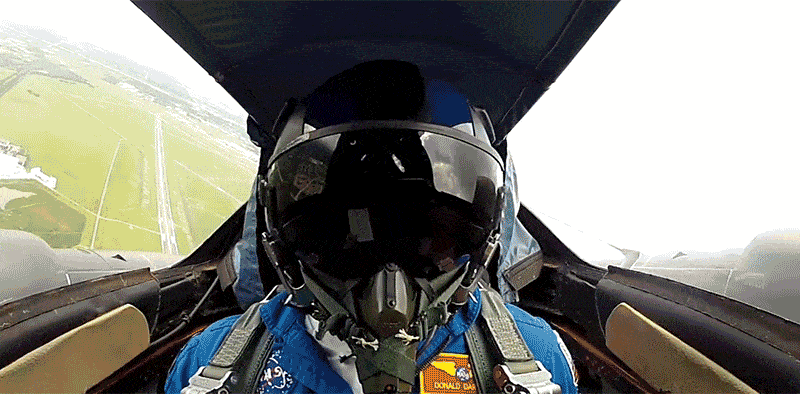
The upcoming August total eclipse has gotten millions of American hyped over what can be described as a once in a lifetime event. Having witnessed a total eclipse, albeit once and when I was very young, I can testify to its unique beauty. Being in the business of space, NASA is also obviously interested in this occurrence. But while most of us will study the eclipse from behind some $2 cardboard shaded glasses, NASA, in its inconspicuous style, will fly multiple jets right though the eclipse line effectively chasing the moon’s shadow.
Secrets in the dark
Pilots will fly WB-57F jets which were first deployed in 1953 as reconnaissance aircraft. They’ve been heavily upgraded since, though, featuring modern avionics but also sophisticated imaging instruments fitted on the nosecone. The telescope cameras can see in infrared and can capture photos and videos at high resolution.
The main target is the sun’s atmosphere, particularly its corona which due to some odd reasons measures millions of degrees Celsius while the surface itself has a temperature of only about 6,000 degrees Celsius.
No one is sure why this happens but there are some hypotheses. One suggests that a special type of magnetic waves called Alfvén waves might dissipate energy into the sun’s outer atmosphere. Another hypothesis points the finger at nanoflares — micro explosions on the surface of the sun — that are too small to detect individually but collectively occur frequently throughout the surface of the sun providing a source of heat that could funnel the corona.
The eclipse’s cover provides an extremely rare opportunity for the instruments fitted on the aircraft to study this weird phenomenon. NASA is also interested in imaging the planet Mercury which will become far more visible during the eclipse.
“These could well turn out to be the best ever observations of high frequency phenomena in the corona,” says Dan Seaton, co-investigator of the project and researcher at the University of Colorado in Boulder, Colorado. “Extending the observing time and going to very high altitude might allow us to see a few events or track waves that would be essentially invisible in just two minutes of observations from the ground.”
https://www.youtube.com/watch?v=R0GNqlGNZkI
The two WB-57F jets will launch from Ellington Field near NASA’s Johnson Space Center in Houston on Aug. 21, 2017. They’ll fly at an altitude of 50,000 feet where the sky is 20 to 30 times darker than it is from the ground providing excellent imaging conditions. But while it’s tempting to think these two planes will chase the eclipse throughout its development over the States, the reality is they’re far too slow. Even at their top speed of 600 mph, the jets can only stay behind the moon’s shadow for so long which moves at 2,400 mph. To be more precise, each plane will observe the total eclipse for about three and a half minutes each as they fly over Missouri, Illinois and Tennessee.


